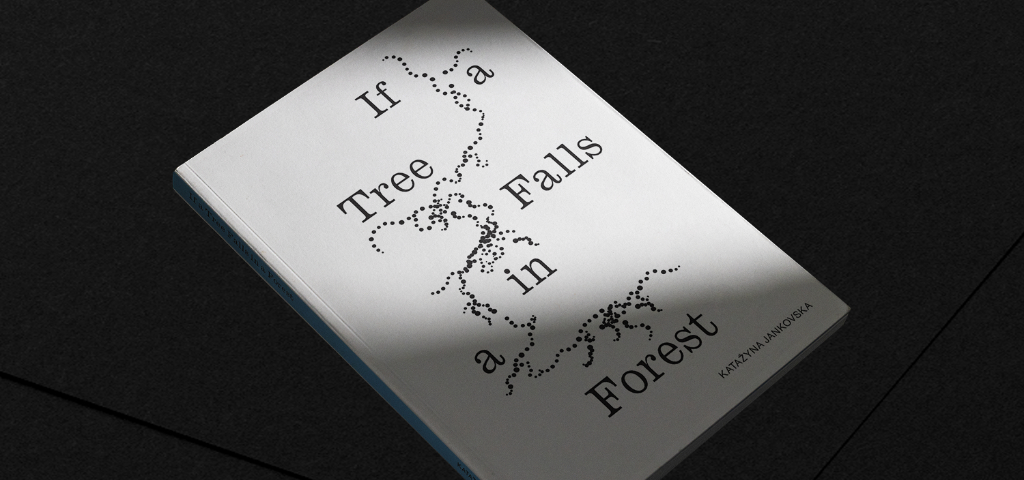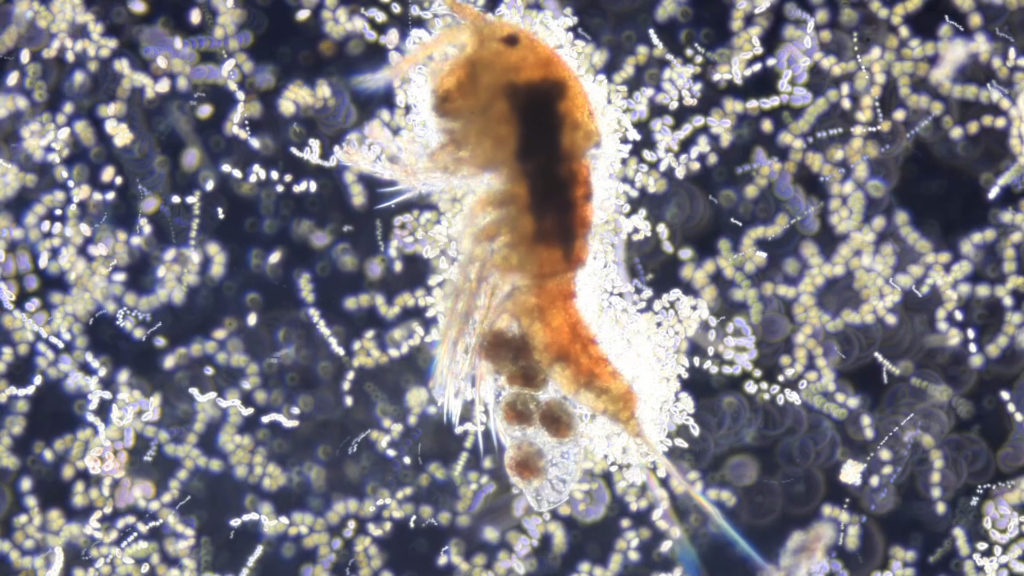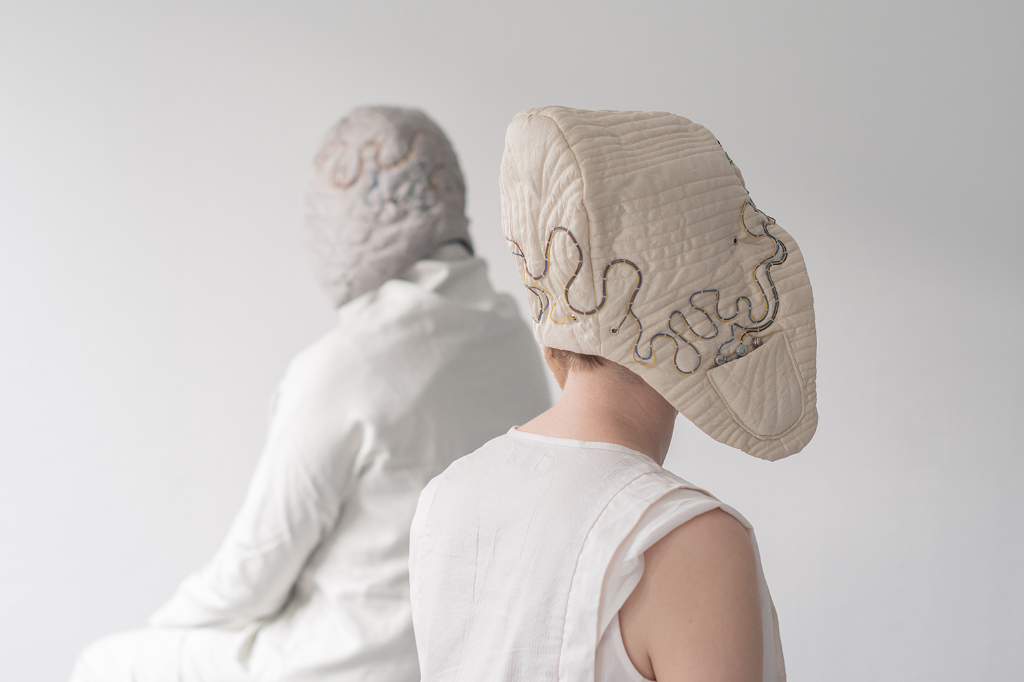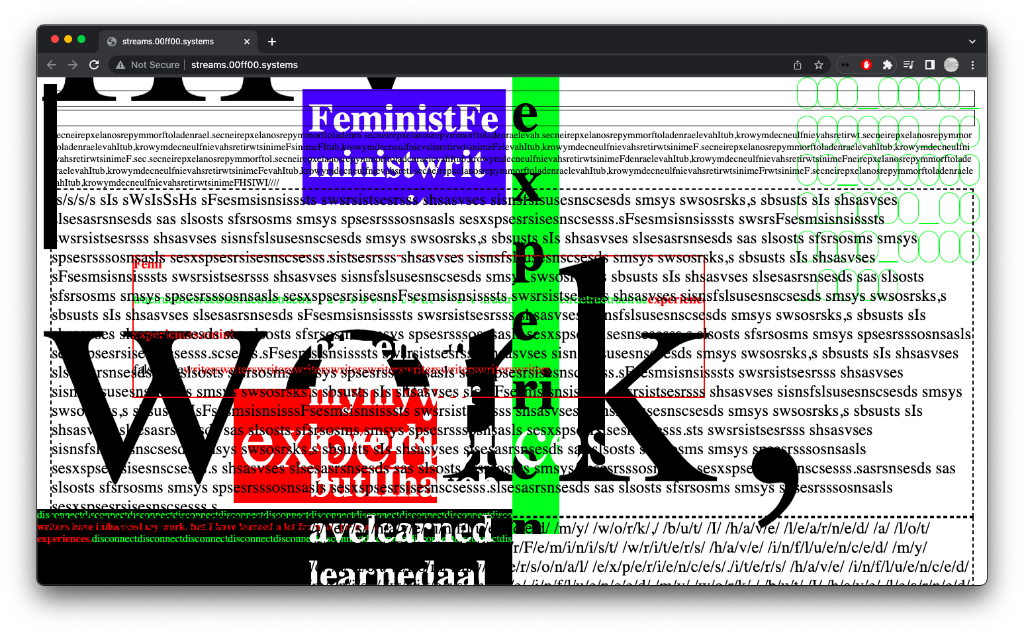Text by Katažyna Jankovska

If a tree falls in a forest and no one is around to hear it, does it make a sound? Commonly associated with the absence of the human receiver to experience the sound vibrations, this thought experiment acquires ever new meanings in today’s technologically driven, post-Anthropocentric world.
We perceive each other and the world around us through our senses. The senses we use determine the way we engage with our environments. Yet we are conditioned to pay attention to only a limited range of sensory inputs; our senses operate as filters that process, accept, and remove certain sensory cues. Thus human “reality” is only a representation of what our five senses (sight, hearing, touch, taste, and smell) allow us to perceive, capturing only a small fraction of the world around us.
The unwitnessed falling tree leaves us with the question—what constitutes reality? What about whale songs and high-pitched sounds of insects, chemical flows, wavelengths of light that do not reach our retina, Earth’s magnetic field lines traversing space, and other dynamics of the world that happen outside and beyond human perception? The awareness of human perceptual limitations makes one think about the independence of things from human agency and other than human sentience.
Jakob von Uexküll’s concept of the umwelt refers to the unique sensory world of a particular organism. Specific organism-environment makes species inhabit different worlds according to the senses they possess. Different animals rely on different sensoria that are not limited to our Western classification of five dominant senses. These can range from electroreception (ability to detect electric fields), olfaction (sense of smell), gustation (sense of taste), and hygroreception (ability to detect changes in moisture).
They also detect a wider array of sounds, smells, and colours. Bats echolocate insects, sharks detect electrical fields, snakes see infrared radiation, and bees sense magnetic fields. Elephants communicate using chemicals and odours. Plants detect and monitor air pollutants. Therefore, the sensory world of animals and plants falls outside what we can see, hear and perceive. The intelligence of microorganisms and plants still remains largely inaccessible to us. How does the world appear to a tree? What do trees know?
Technical innovations have led to transformations in our perceptual parameters. Since vision and hearing are considered senses that influence our understanding of the world the most, optical technology and hearing aids were the first to enhance and improve our impaired sensory abilities. Later, the invention of certain technologies, such as the telescope, extended the boundaries of our natural sensory environment.
Equipped with technological devices, we are now able to set foot into worlds that initially did not belong to our sensory ecologies. Technologies that detect electromagnetic radiation, ultrasound waves, and x-ray wavelengths reached even more beyond the limits of human sensory perception. Technically mediated umwelt reaches not only geographically but also temporally distant processes and places, from the depths of the earth, preserving deep time to micro-processes nonsynchronous with human time.
Today’s data-gathering sensors, from satellites sensing the surface of the earth and deep space probes to underwater sonar equipment, create a planetary sensory network of cables and wires that operates as humanity’s eyes and ears. We become so dependent on them, that, as Johan Gärdebo writes: If a tree falls, and no data is around to sense it, today’s governing bodies have an increasingly difficult time thinking the tree ever existed [1].



Right: Headwear from You and I, You and Me project, Mindaugas Gapševičius (2021). Photo credit: Bon Alog

What kind of technologies we have and who has access to them determines what kind of knowledge is accessible. The omnipresence of big centralised services defines what is thinkable, adding to our blindness to other forms of perception and intelligence.
As James Bridle notices in Ways of Being, almost all computers we use today are automatic machines, based on Turing’s definition of computation. A system that operates on a set of instructions, doing what it is told to do. Yet Alan Turing wrote about the possibility of a different kind of machine—the Oracle machine, that is capable of taking prompts from the wider world beyond the boundaries of programming.
Take, for instance, a technology generating random numbers. One of the examples Bridle uses is the British lottery machine that is connected to the neon tube. It measures the electrical flux within the tube, affected by radio and cosmic particles passing through. That is to say; the machine is dependent on cosmic processes, which is a completely different way of thinking, neglected in favour of automatic machines.
So Bridle asks—“what would it mean to build artificial intelligence and other machines that were more like octopuses, more like fungi, or more like forests?” Slime moulds are able to find the most efficient connections. Plants, for instance, are excellent at distributing information and resources. What if artificial intelligence would learn directly from nature? [2]
With the loss of agency over tools and knowledge accessible, it is crucial to be able to develop our own tools and understand data. If a Tree Falls in a Forest publication collects interviews on artistic experiments and scientific research suggest alternative modes of perception, interaction, and communication.
Mark IJzerman makes use of micro–and telescopes, to explore inaccessible realms from micro to aquatic and celestial environments, unveiling hidden layers of reality. Merle Bergers brings back a sense of smell, translating volatile plant communication into scents that one can wear and use to assess the state of the world. Roland van Dierendonck develops microbe sensing technologies, engaging with microbes inside and outside of us and stressing the influence of the microbiome on our behaviour.
Technology is a mediator in Mindaugas Gapševičius’ practice, who develops interfaces that allow one to sense electrical signals sent from the other, be it a human, a dog, or the environment, speculating on a new mode of interspecies communication. Jokūbas Čižikas explores frequencies and vibrations happening beyond the audible range, composing sounds from the rhythms emitted by the human body, such as heartbeats and brainwaves.
Philip Vermeulen questions our reliance on the sense of sight in perceiving reality by stimulating our vision with fast-moving phenomena or causing perceptual deprivation. Ignas Pavliukevičius develops artificial digital beings constantly evolving and learning from the environment, wondering about the technological umwelt, while Sandra Golubjevaitė challenges the logic of the human world by creating interfaces with computing approaches coming from nonlinear principles.
Using technologies to translate opaque processes to the domain of the human senses, artists cultivate new modes of attention and temporarily reconfigure our perceptual systems. And by creating new tools, and adding to the open-source movement and DIY culture, they all are taking back control over things that are permitted, decentralising the knowledge. Our senses are not fixed.
Exploring contours of human sensoria and experimenting with modes of attention, If a Tree Falls in a Forest looks at processes happening outside of human scales spatially, temporarily, and perceptually. Paying attention to the animal, vegetal, and microbial species and emphasising biological and technological micro agencies, this research addresses perception and sensual awareness in nonhuman, technological, and human dimensions.





